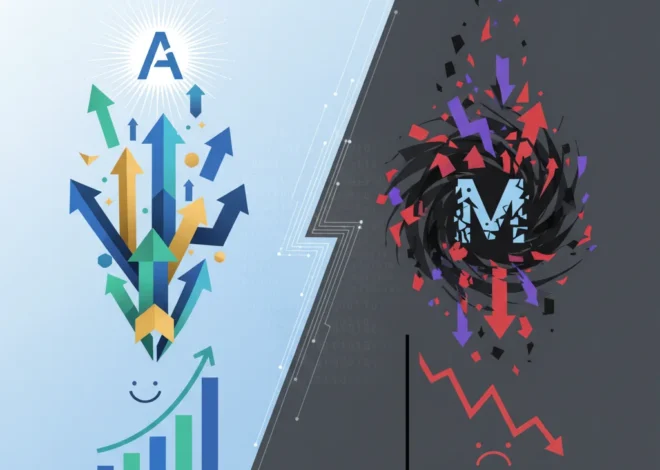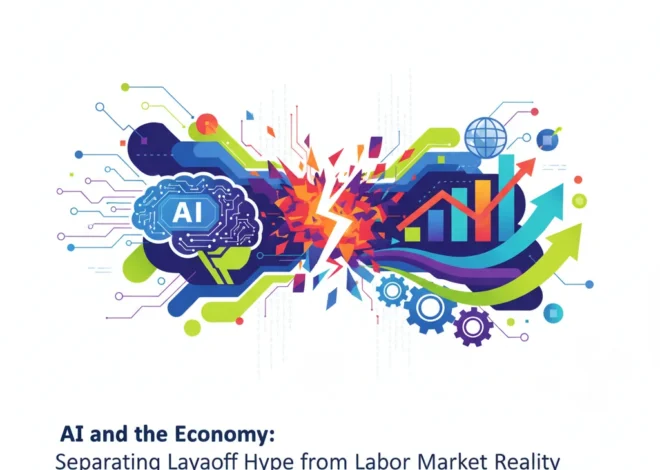
Beyond the ‘Glasshole’: Can AI Finally Make Smart Glasses a Reality We Trust?
Remember Google Glass? It arrived in 2013 like a dispatch from the future—a sleek, if slightly awkward, promise of a world where information was always in your line of sight. It also crashed and burned in one of the most spectacular product flameouts in recent tech history, birthing the term “Glasshole” and cementing a deep-seated public distrust of face-worn cameras.
For years, that failure has cast a long shadow over the entire field of wearable tech. But a quiet revolution has been brewing, far from the initial hype of Silicon Valley. A new generation of smart glasses is emerging, and this time, the driving force isn’t just about hardware. It’s about practical artificial intelligence, accessible pricing, and a completely different strategic playbook, largely pioneered by a wave of agile Chinese startups.
The question is no longer just “can we build them?” but a far more complex one: After being burned once, can smart glasses ever earn our trust?
The Ghost of Wearables Past: Why Google Glass Was a Vision Too Soon
To understand where we’re going, we have to remember why the first attempt failed so miserably. Google Glass wasn’t just a product; it was a social experiment that society collectively rejected. The core problems were a toxic cocktail of issues:
- The “Creep” Factor: The forward-facing camera with no clear recording indicator created immediate social anxiety. Was the person you were talking to recording you? This ambiguity shattered social norms and privacy expectations.
- The Price Tag: At $1,500 for an “Explorer Edition”, it was a toy for the wealthy tech elite, creating a visible class divide between wearers and the general public.
- The Lack of a “Killer App”: Beyond a few niche uses and basic notifications, there was no compelling reason for the average person to wear one. It was a solution in search of a problem.
- The Design: It screamed “I am a piece of technology.” It was impossible to wear discreetly, immediately marking the user as a “techie” and inviting scrutiny.
This legacy of failure created a blueprint for what a successor would need to overcome. Any new contender in the smart glasses space would have to be affordable, discreet, genuinely useful, and, most importantly, designed to build—not break—social trust.
What’s Different This Time? The AI-Powered Renaissance
Fast forward to today, and the landscape is unrecognizable. The new wave of smart glasses, from companies like Rokid, Xreal (formerly Nreal), and others, are built on a foundation of technological advancements that simply didn’t exist a decade ago.
The AI Engine is the Product
The single biggest differentiator is the deep integration of artificial intelligence and machine learning. While Google Glass was essentially a smartphone screen strapped to your face, modern smart glasses are conceived as AI-first devices. Zhu Mingming, founder of the Hangzhou-based startup Rokid, put it bluntly: his company is “an AI company, not a hardware company” (source).
This shift in philosophy changes everything. The value isn’t just in displaying information, but in using AI to interpret the world around you and provide context-aware assistance. This includes:
- Real-time Translation: AI models can listen to a foreign language and display subtitles in your field of vision, breaking down communication barriers.
- Intelligent Navigation: Instead of looking down at your phone, navigation prompts can be overlaid directly onto the streets and turns in front of you.
- Contextual Information: Pointing your glasses at a landmark could bring up historical facts, or looking at a product in a store could display reviews and price comparisons.
This is all powered by sophisticated software, often running a hybrid model of on-device processing for speed and privacy, coupled with powerful cloud-based AI for more complex tasks. For developers, this opens up a new frontier for programming applications that can seamlessly blend the digital and physical worlds.
Affordability and Accessible Design
The new generation has learned the lesson of the $1,500 price tag. Companies are aggressively targeting a much more consumer-friendly price point. Rokid’s latest glasses, for example, are expected to retail for under $500 (source), placing them in the same category as a mid-range smartphone or a high-end pair of headphones. Crucially, they also look more like… well, glasses. The bulky, robotic aesthetic is gone, replaced by designs that are far more likely to blend in, reducing the social friction that plagued early models.
A Tale of Two Generations: The Smart Glass Evolution
The difference between the first wave of smart glasses and the current generation is stark. It represents a fundamental shift from a hardware-first to a software-and-AI-first approach. Here’s a quick comparison:
| Feature | First-Gen (e.g., Google Glass ~2013) | New-Gen (e.g., Rokid, Ray-Ban Meta) |
|---|---|---|
| Core Philosophy | Hardware-first; a wearable notification screen. | AI-first; a context-aware assistant. |
| Price Point | ~$1,500 (Prohibitive for mass market) | ~$300 – $700 (Closer to consumer electronics) |
| Appearance | Overtly technological, conspicuous. | Discreet, designed to resemble normal eyewear. |
| Key Technology | Bluetooth/Wi-Fi connectivity, basic camera. | On-device AI, machine learning models, advanced optics. |
| Primary Use Case | Unclear; notifications, photos, basic search. | Specific AI-driven tasks: translation, navigation, teleprompting. |
| Biggest Hurdle | Social acceptance and the “Glasshole” stigma. | Data privacy, cybersecurity, and building user trust. |
The Billion Nuclear Gamble: Can Sam Altman's Oklo Reinvent Energy for the AI Era?
The Elephant in the Room: Can We Solve the Privacy Problem?
Despite all the technological innovation, the fundamental challenge remains the same: trust. An always-on camera and microphone connected to the internet, sitting on your face, is a cybersecurity nightmare waiting to happen. It also reopens all the social wounds that Google Glass created.
The new players are attempting to address this head-on. Many new models include a clear, bright LED light that activates whenever the camera is recording, providing a non-negotiable visual cue to those around the wearer. This is a small but crucial design choice aimed at rebuilding the broken social contract.
Furthermore, the push towards more on-device AI processing is a step in the right direction for privacy. By handling more tasks locally without sending raw video and audio data to the cloud, the attack surface for potential breaches is reduced. However, this is a delicate balance. The most powerful AI models still live in the cloud, and functionality will be limited without that connection. Users will have to decide how much privacy they are willing to trade for the “magic” of AI-powered features. This is where transparent privacy policies and robust security protocols become non-negotiable for any company wanting to succeed.
The Future is in Your Sight: A New Platform for Innovation
If these companies can successfully navigate the minefield of public trust, the implications are enormous. Smart glasses represent not just a new gadget, but an entirely new computing platform—the first truly mainstream augmented reality interface.
For Developers and Tech Professionals: This is a call to action. A new ecosystem needs to be built from the ground up. There will be immense demand for skills in programming for AR environments, developing lightweight machine learning models, and creating user interfaces that are intuitive without being intrusive.
For Entrepreneurs and Startups: The opportunities extend far beyond the hardware itself. The real money will be in building vertical-specific SaaS solutions on top of these platforms. Imagine a surgeon getting real-time data overlays during an operation, a logistics worker using vision-picking for hands-free automation in a warehouse, or a mechanic seeing a digital schematic overlaid on an engine. Each of these is a billion-dollar opportunity waiting to be unlocked.
Mars is a Software Problem We Haven't Solved Yet
Ultimately, the second coming of smart glasses is a far more measured, thoughtful, and pragmatic affair. The focus has shifted from technological spectacle to practical utility. The hardware is becoming a commodity; the true differentiator is the intelligence of the software. While the ghost of Google Glass still looms, this new generation, powered by AI and driven by a clearer understanding of social dynamics, has a real chance to finally deliver on the promise of augmented reality. The technology is almost there. The only remaining question is whether we are ready to trust it.


